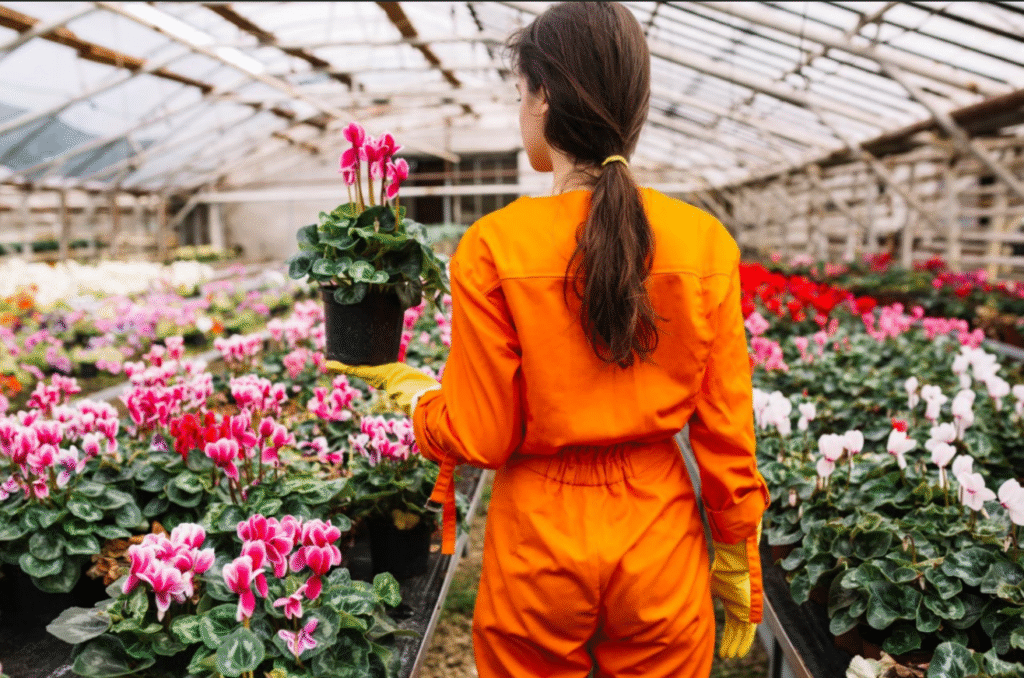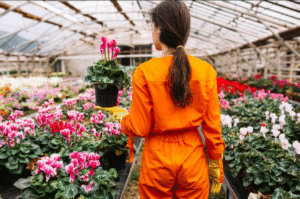When most people admire a bouquet at a wedding, in a hotel lobby, or on a dinner table, they rarely stop to think about how those flowers traveled thousands of miles to get there. The journey of a rose, a carnation, or a bundle of lush greenery is complex and highly coordinated. At the heart of this supply chain is Miami, the epicenter of the U.S. floral import industry.
Behind every bloom lies a story of farmers, inspectors, logistics experts, and wholesale distributors working tirelessly to maintain freshness. This article pulls back the curtain on the industry, showing how wholesale flower distributors in Miami operate, why the city dominates global flower distribution, and what happens behind the scenes before flowers make it into your hands.
Why Miami Is the U.S. Flower Gateway
Geographic Advantage
Miami’s location makes it the perfect hub for floral imports. Colombia and Ecuador are the world’s top cut-flower producers, particularly for roses, carnations, and tropical greens. Flights from Bogotá or Quito to Miami take only 3–4 hours, meaning flowers can be harvested in the morning and flown to the U.S. by evening. This short transit time helps preserve freshness and reduces the risk of spoilage.
Scale of Operations
Miami International Airport (MIA) is not just a passenger hub; it’s the busiest airport in the world for perishable cargo. In peak holiday seasons like Valentine’s Day and Mother’s Day, MIA handles tens of thousands of tons of flowers weekly, accounting for nearly 88–91% of all flowers imported into the U.S. The airport’s infrastructure is built around perishables, with dedicated cold storage, fast-track inspection facilities, and logistics providers who specialize in floral products.
Industry Infrastructure
Beyond the airport, Miami hosts a dense cluster of wholesale flower distributors, refrigerated warehouses, and trucking companies. Many are located just a few miles from MIA to minimize transit time. Together, they form an ecosystem that makes Miami the undisputed gateway of the U.S. flower industry.
The Role of Wholesale Flower Distributors
Wholesale flower distributors are the middle link in the floral chain, bridging the gap between international farms and the U.S. retail market. Their role is far more than simple reselling.
- Receiving Shipments
Once flowers arrive in Miami, they go through customs clearance and agricultural inspections. Distributors then receive shipments directly from airlines or freight forwarders.
- Cold Storage & Hydration
Flowers are immediately transferred into climate-controlled warehouses, kept at 33–35°F. This ensures the cold chain remains unbroken from the farm to the retailer.
- Sorting & Repacking
Distributors open bulk shipments from farms, check for quality, and then repack flowers into smaller quantities tailored to different buyers, whether it’s a single florist ordering 10 bunches of eucalyptus or a supermarket chain ordering pallets of roses.
- Nationwide Distribution
Finally, distributors arrange refrigerated trucking or overnight air freight to ensure flowers reach clients quickly. Many wholesalers promise 24–48-hour delivery windows across the U.S.
In essence, distributors transform mass international shipments into manageable, florist-ready boxes while safeguarding freshness and quality.
How Miami Wholesalers Prep and Ship Bulk Greenery
1. Cold Chain Maintenance
Maintaining the cold chain is critical. Flowers and greenery are highly perishable, and even a small break in temperature control can drastically shorten vase life. Miami distributors:
- Use pre-cooling chambers to bring flowers down to the optimal temperature.
- Store products in refrigerated warehouses with strict monitoring systems.
- Load trucks directly from refrigerated docks to prevent exposure to Florida’s heat.
This attention to temperature extends beyond the warehouse. Shipments are moved in refrigerated trucks (reefers) or loaded into temperature-controlled air cargo containers for long-distance deliveries.
2. Inspection and Quality Control
Every shipment undergoes multiple layers of inspection.
- Government inspections: U.S. Customs and APHIS check for pests, diseases, and compliance with import regulations.
- Distributor checks: Staff evaluate freshness, hydration, and stem quality. Greens are checked for crispness, leaf color, and durability. Any stems that don’t meet standards are culled.
3. Packing and Boxing
Packing is both a science and an art. Bulk greenery is handled with care to ensure it travels well.
- Waxed corrugated boxes are used because they resist moisture and maintain structure during long transits.
- Hydration packs or gel-based water tubes may be added to certain greens.
- Vacuum-sealed liners are sometimes used to keep moisture in.
- Each box is labeled with farm origin, product name, and handling instructions.
4. Logistics and Shipping
Miami wholesalers coordinate an intricate logistics dance.
- Reefer trucks head to supermarkets, wholesalers, and large event florists.
- Air freight shipments head to hubs like New York, Chicago, Los Angeles, and Dallas, ensuring national coverage.
- Many distributors operate with daily order cutoffs, meaning florists must place orders by a specific time to ensure next-day delivery.
Floral Greens: The Workhorse of the Industry
Floral greens are often overlooked compared to roses or lilies, but they are the structural backbone of most floral designs. Miami wholesalers move millions of stems of greenery every week.
Popular Types of Greens
- Wholesale Leatherleaf Fern: A versatile filler, durable and affordable.
- Wholesale Italian Ruscus: Known for its elegant trailing look in high-end arrangements.
- Wholesale Eucalyptus (seeded, silver dollar, baby blue): Trendy in weddings and rustic-themed events.
- Bulk Salal (Lemon Leaf): Provides volume and color contrast.
- Wholesale Monstera & Tropical Leaves: Used for statement pieces, hotel lobbies, and large installations.
Why Greens Matter
- They add texture and depth to arrangements.
- They enhance the look of flowers, making designs appear fuller.
- They are often longer-lasting than blooms, providing value for clients.
Wholesale distributors often ship these greens in bulk cartons of 10–20 bunches per box, making them cost-effective for florists and event planners.
Seasonal Surge: Holidays and Events
Valentine’s Day
The single busiest time of year for the floral industry. Distributors handle hundreds of flights of roses, with greens like leatherleaf and ruscus in equally high demand.
Mother’s Day
Unlike Valentine’s, which is rose-heavy, Mother’s Day sees demand for a wider variety of carnations, mixed bouquets, and pastel greens like eucalyptus.
Wedding Season (May–October)
Event florists order massive wholesale quantities of bulk eucalyptus, wholesale ruscus, and bulk tropical foliage for arches, installations, and cascading bouquets.
Christmas & Winter Holidays
Distributors bring in evergreens, pine, cedar, and holly, creating a completely different type of greenery surge.
During each of these seasons, Miami distributors ramp up staff, extend warehouse hours, and sometimes double or triple shipping capacity to keep up with demand.
Technology and Innovation in the Industry
The wholesale floral trade is no longer just about manual labor and tradition. Miami distributors are embracing innovation.
- E-commerce Ordering Platforms: Florists can log in, see live inventory, and order with real-time shipping updates.
- Barcode Tracking Systems: Every box of greens is tracked from the warehouse to the final destination.
- Sustainability Initiatives: Many distributors now use eco-friendly packaging, solar-powered warehouses, and optimized shipping routes to reduce their carbon footprint.
Challenges Faced by Wholesale Floral Distributors
Even with the best planning, distributors face major obstacles:
- Perishability Risk: A single flight delay or power outage can ruin thousands of dollars’ worth of flowers.
- Regulatory Bottlenecks: Customs and agricultural inspections can cause delays, especially during peak seasons.
- Rising Freight Costs: As fuel and labor costs rise, shipping flowers nationwide becomes more expensive.
- Weather Disruptions: Hurricanes or storms in Florida can ground flights, leaving warehouses full of delicate flowers that cannot wait.
Future of Miami’s Wholesale Flower Trade
The future looks bright, but also more competitive. The U.S. floral industry is growing thanks to rising demand for online flower delivery and large-scale event design. Miami distributors will continue to be the backbone of this supply chain, but success will require:
- Investment in technology for better forecasting and logistics.
- Diversification into local U.S. sourcing to complement imports.
- Sustainable practices to meet customer demand for eco-friendly flowers and greens.
In the years ahead, Miami will not only remain the floral gateway of the U.S. but also evolve into a center for innovation in floral logistics.
FAQs
- Why are most U.S. flowers shipped through Miami?
Because of its proximity to South America, Miami International Airport handles nearly 90% of U.S. floral imports, making it the central hub for the industry. - What temperature should floral greens be shipped at?
The ideal shipping temperature is 33–35°F, which helps preserve hydration and freshness. - How do Miami distributors prepare bulk greenery for shipment?
They pre-cool greens, check for quality, pack them in waxed boxes with hydration packs, and send them via refrigerated trucks or air freight. - Do wholesale distributors sell directly to consumers?
Most serve florists, retailers, and event companies, but some now offer online platforms for bulk consumer orders. - What’s the busiest season for wholesale distributors?
Valentine’s Day is the busiest, followed by Mother’s Day, the wedding season, and Christmas. - What types of floral greens are most popular?
Leatherleaf, ruscus, eucalyptus, salal, and tropical leaves are among the most shipped greens from Miami. - How do florists avoid delays during holidays?
By placing orders 2–3 weeks in advance, checking distributor cutoff times, and building flexibility into event planning.
Conclusion Blog Images
From the tarmac at Miami International Airport to the hands of a florist across the country, flowers and greenery undergo a meticulous process of inspection, refrigeration, and shipping. Wholesale flower distributors in Miami are the unsung heroes of the floral industry, ensuring that every stem arrives fresh and ready for design.
By understanding the behind-the-scenes logistics, cold-chain management, seasonal surges, and the vital role of floral greens buyers and florists can plan smarter, reduce risk, and guarantee the freshest results for their customers.




